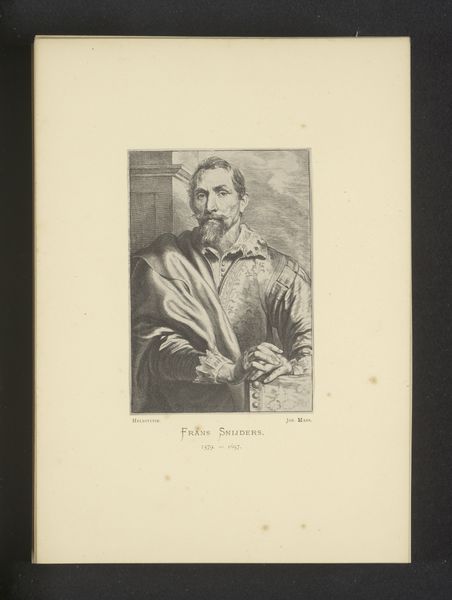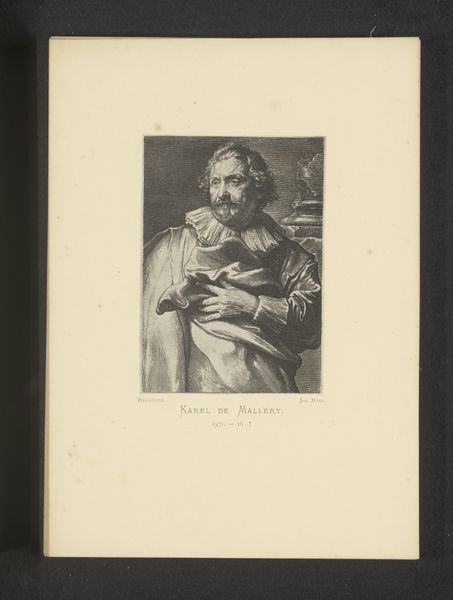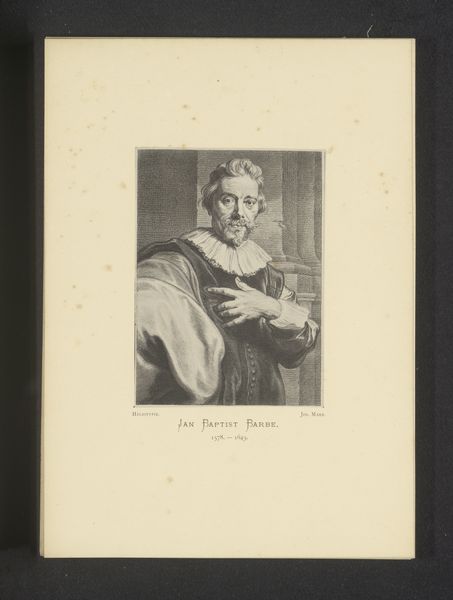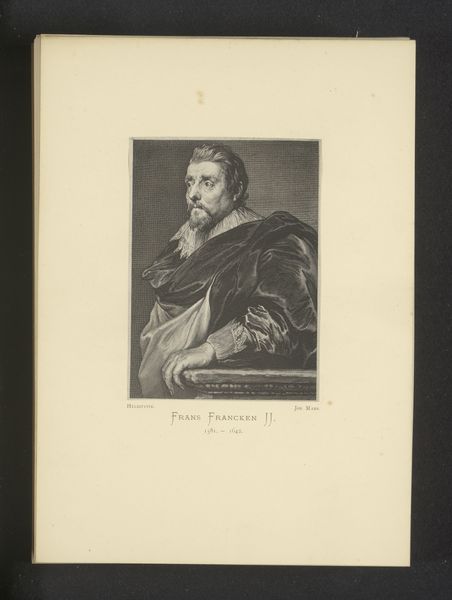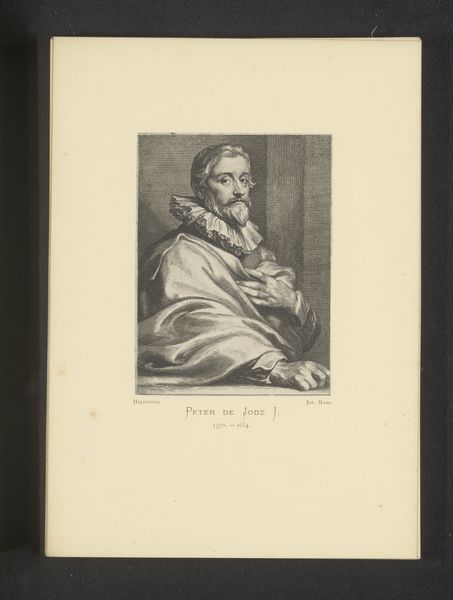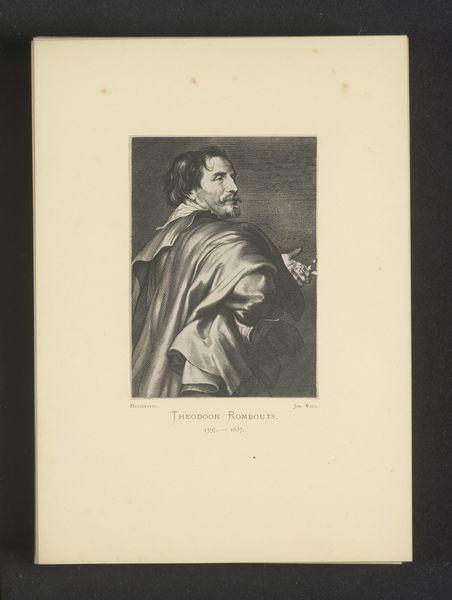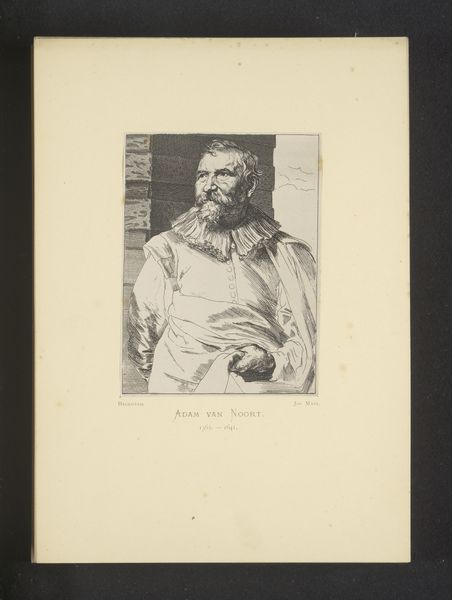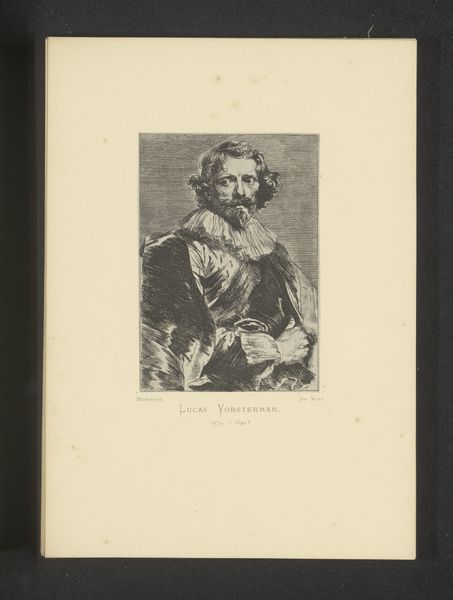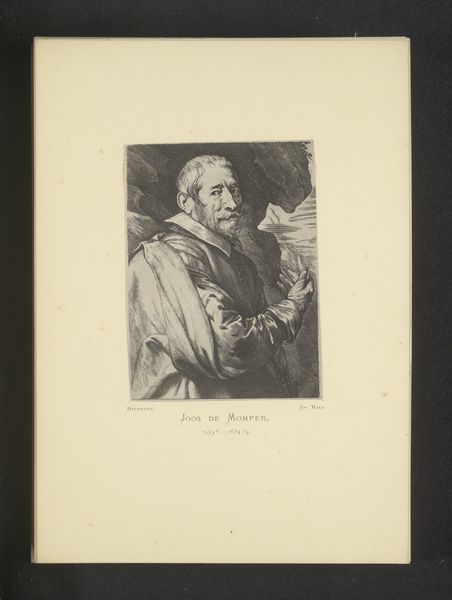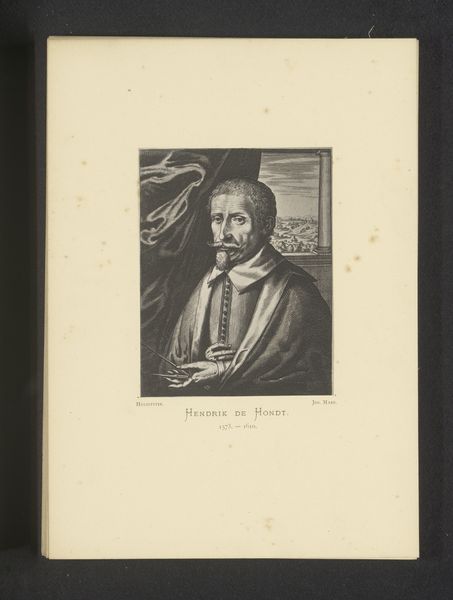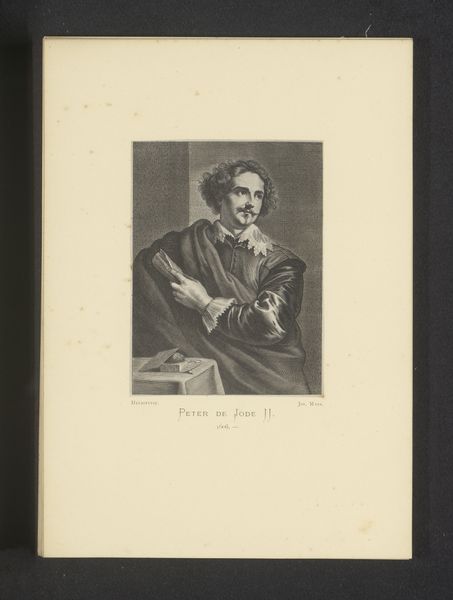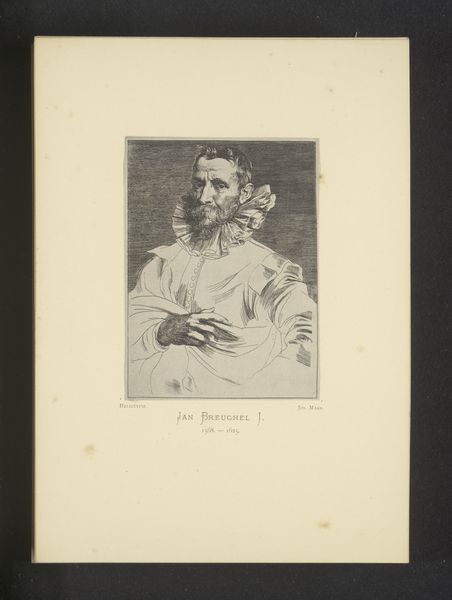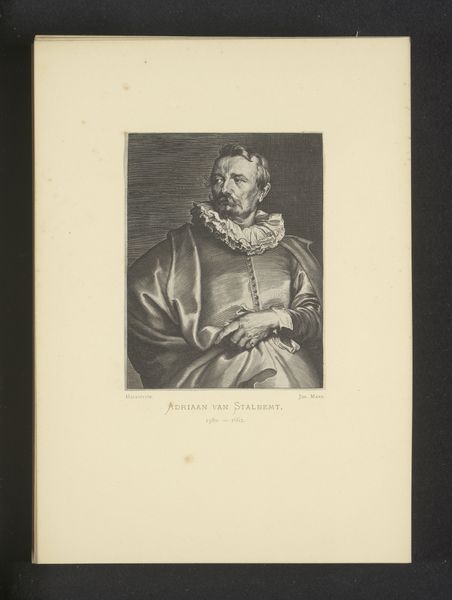
Reproductie van een gravure van een portret van Pieter Brueghel (II) door Anthony van Dyck before 1877
0:00
0:00
Dimensions: height 120 mm, width 86 mm
Copyright: Rijks Museum: Open Domain
Curator: Oh, this image gives me a sense of quiet observation. It is quite striking at first glance! Editor: Indeed! Here, we have an engraving attributed to Joseph Maes, but it’s actually a reproduction. It copies Anthony van Dyck’s portrait of Pieter Brueghel the Younger. We estimate its creation occurred before 1877, placing it well after both Van Dyck and Breughel lived. Curator: A copy, you say? And that copy attempts to portray a person. But is that all? I feel something else is present beyond representation. There’s almost a shadow, maybe an echo, of another, earlier artist involved here. The lines have their own unique cadence. What exactly should we name them? Editor: The style certainly evokes mannerism. We have the stylized portrait form, emphasizing artifice over realism. Notice the elongated, elegant hands—common features. But the most exciting bit? Look at how the textures create a clear hierarchy through composition and light. The intricate lace collar sharply contrasts the sketchier handling of his cloak. Curator: Hierarchy through light. The world framed in delicate black lines. Yes! You’ve pulled it together perfectly for me. In some places, the line is thick. In some places, it seems gone. Yet each variance holds intention, expressing volume despite its reduction into something minimal. He’s a person created with almost no ink at all! Incredible to contemplate! Editor: Consider, too, how an engraver, Maes, imitates another painter’s (Van Dyck) depiction of yet another painter! What interests me is seeing Van Dyck portrayed by Joseph Maes! But, as you stated before: Is it art? Does its status of a mere copy prevent creative integrity? Curator: Perhaps imitation itself has its own expressive power? This exercise could also demonstrate reverence. Now, having delved a bit, what remains with me isn’t a person frozen on paper. It becomes almost like a dance: one creator nodding to another across time. And something remains still, of the subject— Breughel the Younger—in between. That might be what it all attempts to do. Editor: An elegant pas de trois indeed. It reveals that artistic transmission has aesthetic merit in itself. Thank you for making me think so much.
Comments
No comments
Be the first to comment and join the conversation on the ultimate creative platform.
